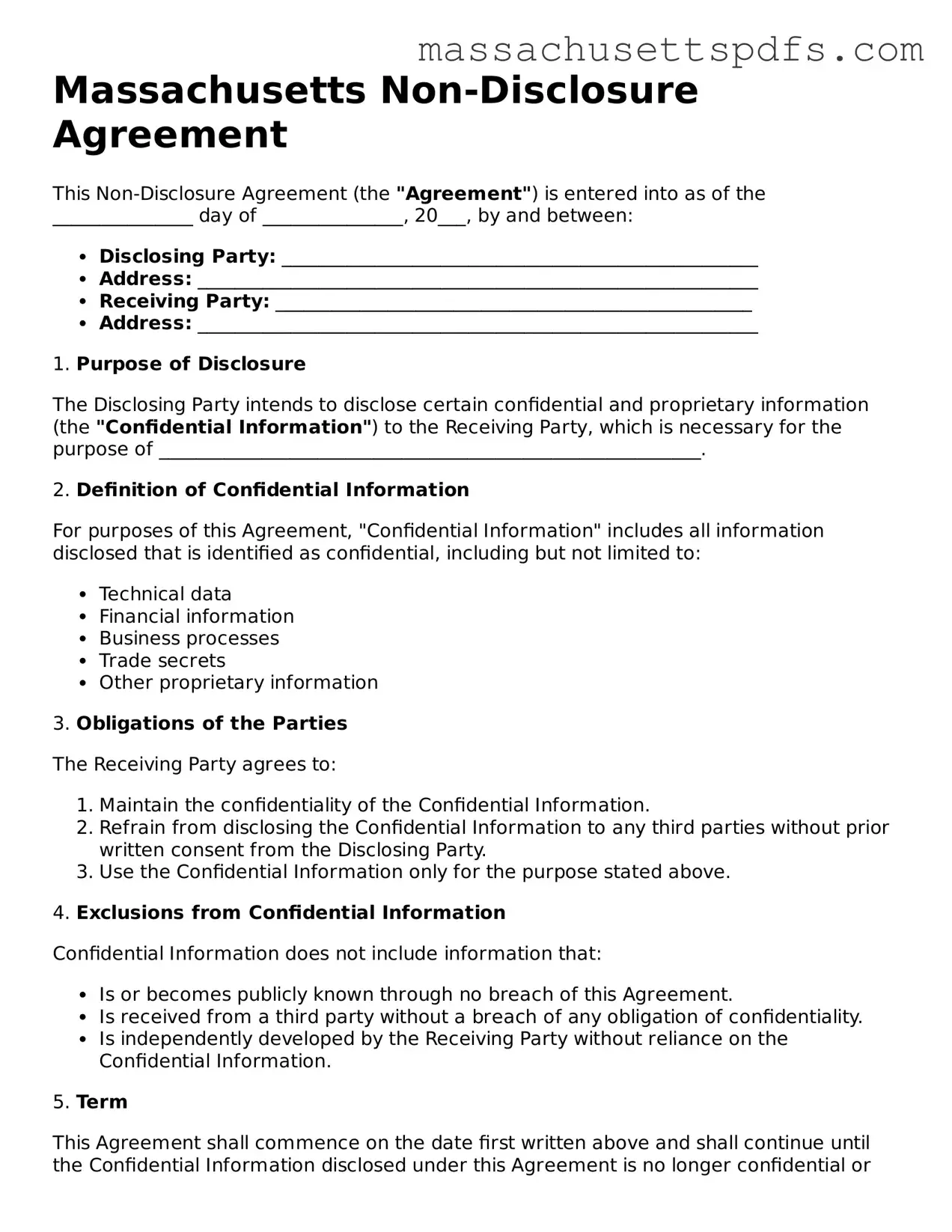Attorney-Approved Massachusetts Non-disclosure Agreement Document
A Massachusetts Non-disclosure Agreement (NDA) is a legal document that protects confidential information shared between parties. By signing this agreement, individuals and businesses can ensure that sensitive data remains private and secure. To get started on safeguarding your information, fill out the form by clicking the button below.
Launch Editor Here
